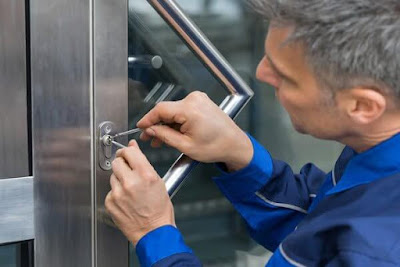Installing a safe is not so difficult if it is a small model
Tools for Installing a safe
measuring and tracing tools (spirit level, grease pencil)
- a cutter
- a hammer
- one centimeter
- a chisel
- a trowel
- a cat tongue trowel
- a perforator an angle grinder
- a built-in safe
- boards for formwork
- threaded rods with nuts
- wooden wedges
- mortar
Step 1 to Install a built-in safe: prepare the piercing
It is recommended to install a safe on a thick wall of block, stone or concrete. The wall must be at least ten centimeters longer than the depth of the trunk. Check that the safe door and the lock of the safe are working properly. Then measure its back side and its depth. Add 15 cm to the height and width of the chest and put these dimensions in a grease pencil on the wall.
Step 2 for Installing a built-in safe: piercing the wall
The hole to be drilled should be 5 cm deeper than the trunk itself. To define the recess space, we will drill into the 4 corners of the mark that we made in grease pencil on the wall. To limit the depth of drilling we will tape the correct distance (chest depth plus 5 cm) on the drill bit to know or stop drilling. Drill into corners stopping at the mark of the adhesive.
Then use the angle grinder, with a disc adapted to the nature of the wall, to cut along the marks of drilling. Use a heavy hammer or hammer to rough the job. Regularly remove accumulated rubble. Continue with the chisel for the hardest pieces. Regularly check the depth in different places and adjust the drilling to reach the defined depth. If you want to hair locksmith the click the link http://www.locksmithsaltlakecity.pro/
Step 3 for Installing a built-in safe: stalling the safe
Protect the box with a film so as not to damage the front panel or the lock . Position the trunk and adjust its position using wooden blocks. Check the level with the spirit level and remove the boot.
Step 4 to Install a built-in safe: seal the safe
Moisten the inside of the hole to increase the adhesion of the seal. Before reinstalling the trunk, place threaded rods on the anti-pull anchors at the rear of the trunk. Screw the nuts of the rods to the pipe wrench. Place the chest in the opening keeping a space of 2 centimeters in front of the wall. Use a formwork board to adjust the gap on both sides of the trunk. Fix the board at the front of the trunk. Prepare the mortar and gradually fill the voids inside the wall starting at the bottom. Tamp regularly with a cat's tongue trowel to allow the mortar to spread and homogenize. Install additional form boards as the hole fills with mortar. Let the mortar dry to remove the protection on the facade with a cutter. Check the operation of the door and the lock. Leave the door open for a week to remove moisture.






















